Gamma rays are high frequency (higher than x-rays) electromagnetic radiation and as such impart the highest energy to photons. On Earth, gamma rays are known from radio-active decay of atomic nuclei, thunderstorms, nuclear explosions, and as a byproduct from the interaction of cosmic rays with the Earth's atmosphere (e.g. see this NASA/CGRO image). Solar flares may also be accompanied by gamma ray emission such as e.g. the X5 flare on 7 March 2012. Occasionally, the solar gamma rays may even be detected if the source location of the flare is on the Sun's farside as seen from Earth (see e.g. this NASA/FERMI article). However, the truly astounding gamma ray producers are outside our solar system. Pulsars and magnetars (the highly magnetized collapsed core of massive supergiant stars) are located in our own Milky Way, but even more powerful gamma rays are produced by the active nucleus in other galaxies (think supermassive black holes). The most intense sources of gamma rays are the Gamma Ray Bursts (GRBs), thought to be associated with the collapse of a superheavy (tens of solar masses) parent star into a neutron star or black hole.
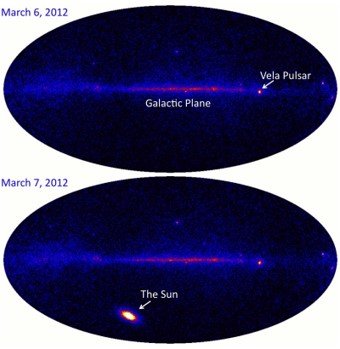
FERMI/LAT all sky gamma ray image on 6 and 7 March 2012, showing the gamma rays associated with the X5 solar flare on 7 March 2012.
On 9 October around 13:20UTC, high-energy detectors on board an array of satellites such as SOHO, Gaia, Integral, FERMI, SWIFT, Wind and BepiColombo observed a sudden and strong increase in gamma rays. An abnormal increase in x-rays was also recorded by the STIX instrument on board Solar Orbiter. The Spectrometer Telescope for Imaging X-rays (STIX) is a hard X-ray imaging spectrometer covering the energy range from 4 to 150 keV, and designed to observe solar flares. Only, as GOES measurements show (underneath), there was no solar flare in soft x-ray going on at that time (stable at C1.3 - light-blue curve). As it turned out, the STIX instrument detected energetic particles that were created after interaction of the high-energetic gamma ray emission with the spacecraft itself.
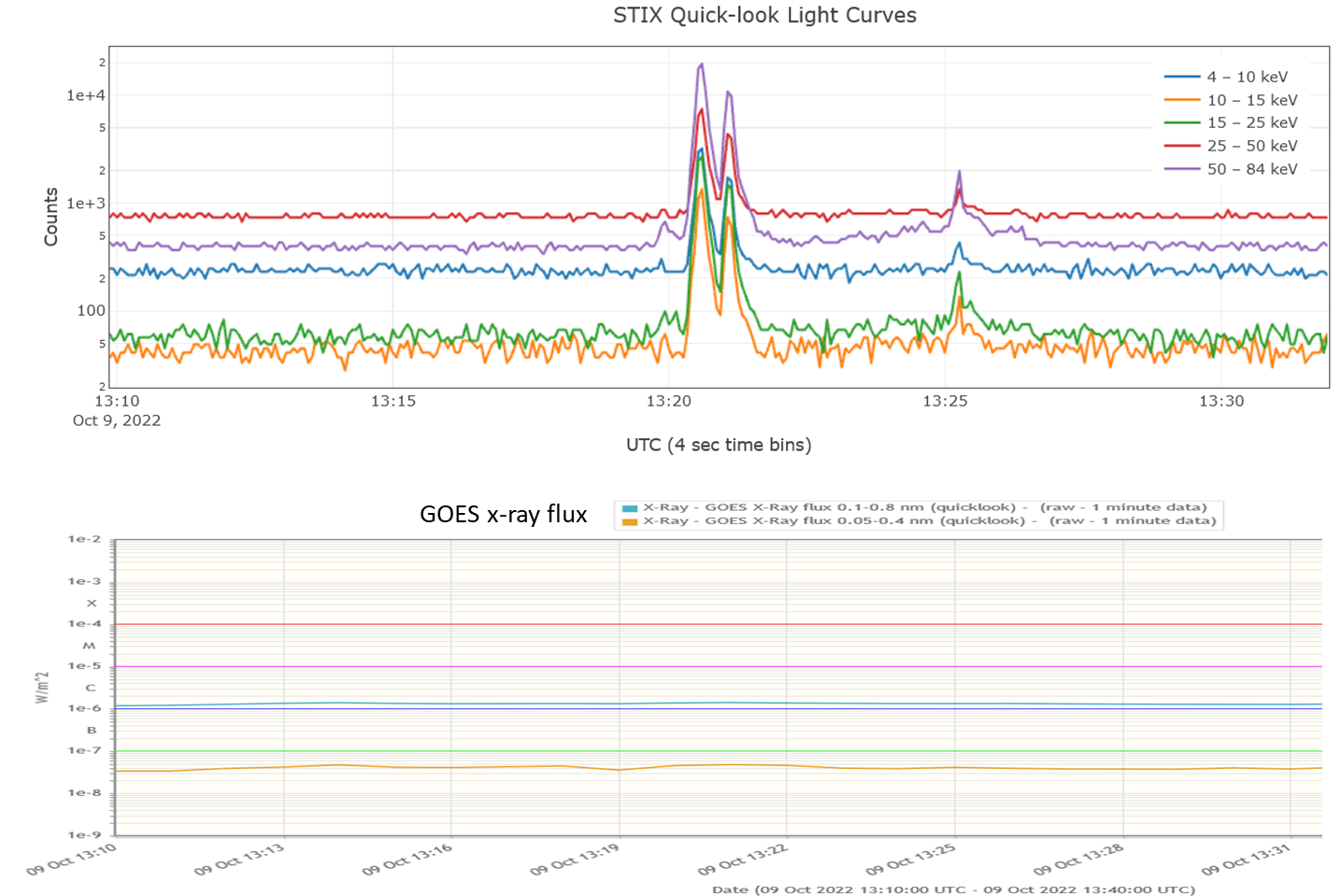
X-ray measurements by Solar Orbiter/STIX (upper graph) and GOES (lower graph) on 9 October (13:10-13:32UTC).
So, from the direct and indirect measurements, it was clear this was an extraordinarily strong gamma ray burst (GRB). Dedicated gamma ray telescopes such as the Fermi Gamma-ray Space Telescope (FERMI for short) and ESA's XMM-Newton (X-ray Multi-Mirror mission) were directed to the apparent source of the blast, located in the direction of the constellation Sagitta ("arrow"). The result is a magnificent picture (underneath) of the echo of the burst showing X-rays scattering off interstellar dust in our galaxy in marvelous rings, meaning these rings are not physically related to the explosion.
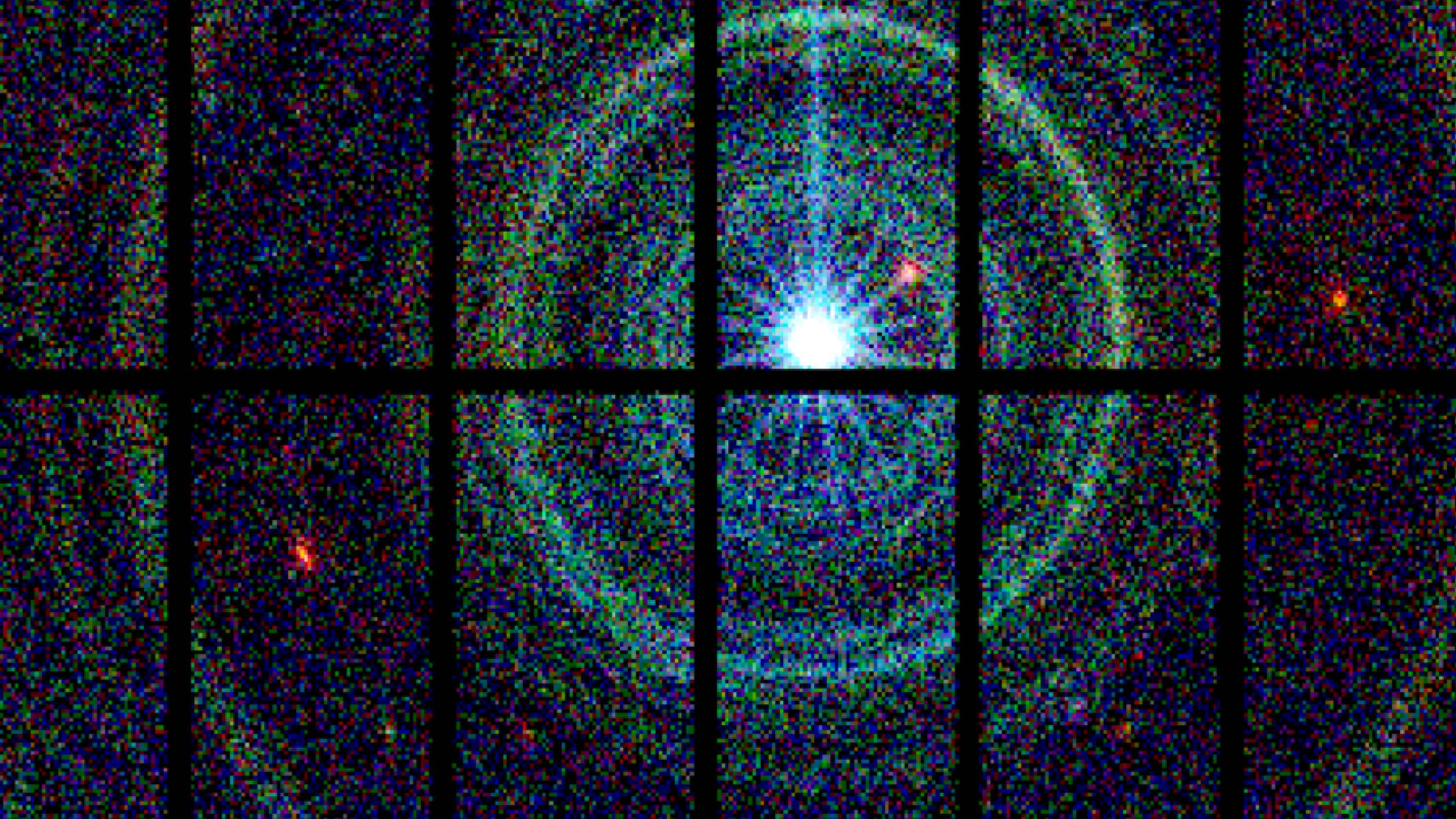
Credit: XMM-Newton
The clip underneath was constructed from images taken by Fermi's Large Area Telescope (LAT) and reveals the sky in gamma rays centered on the location of GRB 221009A (meaning the first ("A") GRB of 2022 October, 9th). Each frame shows gamma rays with energies greater than 100 million electron volts (MeV - Note the STIX data are in keV for observing solar flares...), where brighter colors indicate a stronger gamma ray signal. In total, they represent more than 10 hours of observations, an extremely long duration for a GRB, which typically last only a few minutes. At its maximum, the GRB completely outshined the faint glow from the midplane of our Milky Way galaxy which appears as a wide diagonal band to the left. The image is about 20 degrees across. Current thinking is that GRB 221009A represents the birth of a new black hole formed within the heart of a collapsing star, at an estimated distance of 1.9 billion light years from Earth. This relatively close distance probably contributed to what most likely is the strongest gamma ray burst detected in modern history.
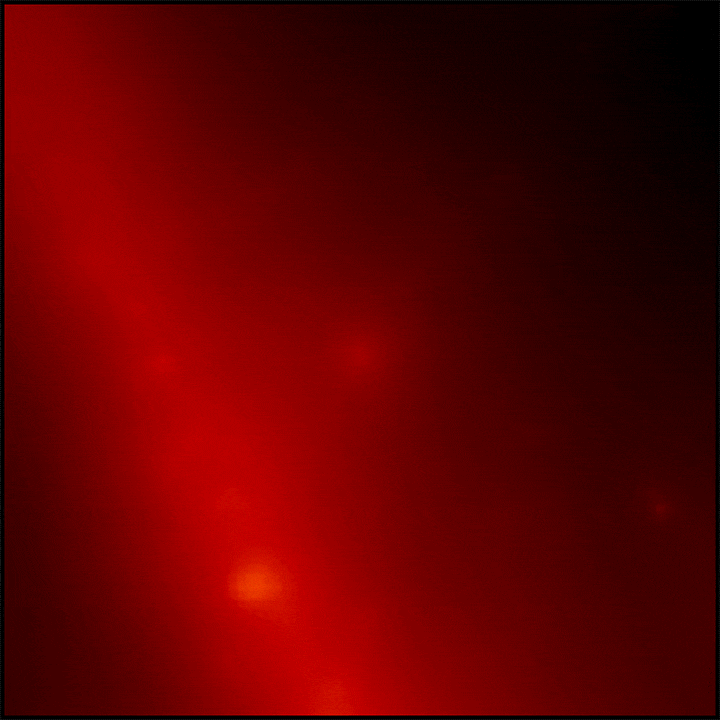
Credit: NASA/DOE/Fermi LAT Collaboration
Not surprizingly, the GRB’s high-energy photons disturbed the Earth's ionosphere and modified its radio-propagation properties. During the gamma ray burst, radio operators detected flickering from multiple stations in VLF (Very Low Frequency) radio signals circling our planet in the Earth-ionosphere waveguide, i.e. where the Earth’s crust forms one of the waveguide’s walls. This allowed the antennas to detect distant transmitters if they were within the GRB radiation footprint, i.e. within the pink line spanning Africa over Asia to Australia as shown in the graph underneath. While GRBs are not common sources of these so-called sudden ionospheric disturbances -the culprits are typically solar flares- some energetic GRBs in the past have left similar imprints. A typical example is the giant gamma ray *flare* (not a GRB!) on magnetar SGR 1806–20 that occurred on 27 December 2004. It massively affected the daytime lower ionosphere down to about 20 km altitude for more than an hour, resulting in very similar VLF effects as the GRB 221009A (Inan et al., 2007). Though that gamma ray "burst" was a lot less energetic than GRB 221009A, it also happened much closer to home, in our very own galaxy, at a distance of only 50.000 light years. Researchers have theorized that a genuine GRB within let's say about 10.000 light years from the Earth would quickly deplete much of the Earth's protective ozone layer, allowing an increase in solar UVB (ultraviolet B) radiation reaching the surface. This radiation is harmful to life, damaging DNA and causing sunburn. In addition, NO2 produced in the atmosphere would cause a decrease in visible sunlight reaching the surface and could cause global cooling (Thomas et al., 2005). The good thing is that there are no obvious candidates for such a GRB near our solar system (ESA), and thus that we "only" have to keep an eye on the occasional gamma ray flares that may occur on hyper-dense, hyper-magnetized star remnants such as magnetars. But even then, it's definitely not the kind of neighbour you want to be close with!
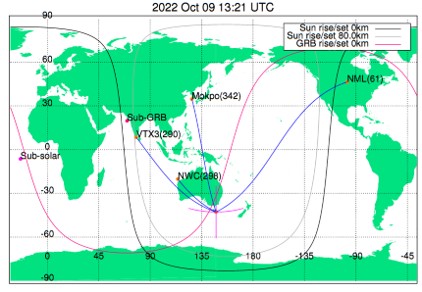
Credit: Dr Andrew Klekociuk and Spaceweather.com - VLF signals were received in Tasmania from stations in India and South-Korea (within the GRB imprint), but not from USA (outside the imprint).
Sources and further reading: ESA (ESA spacecraft catch the brightest ever gamma-ray burst ), NASA (NASA’s Swift, Fermi Missions Detect Exceptional Cosmic Blast), and Spaceweather.com (Powerful Gamma-Ray Burst Made Currents Flow in the Earth), RHESSI Science Nugget 439.





